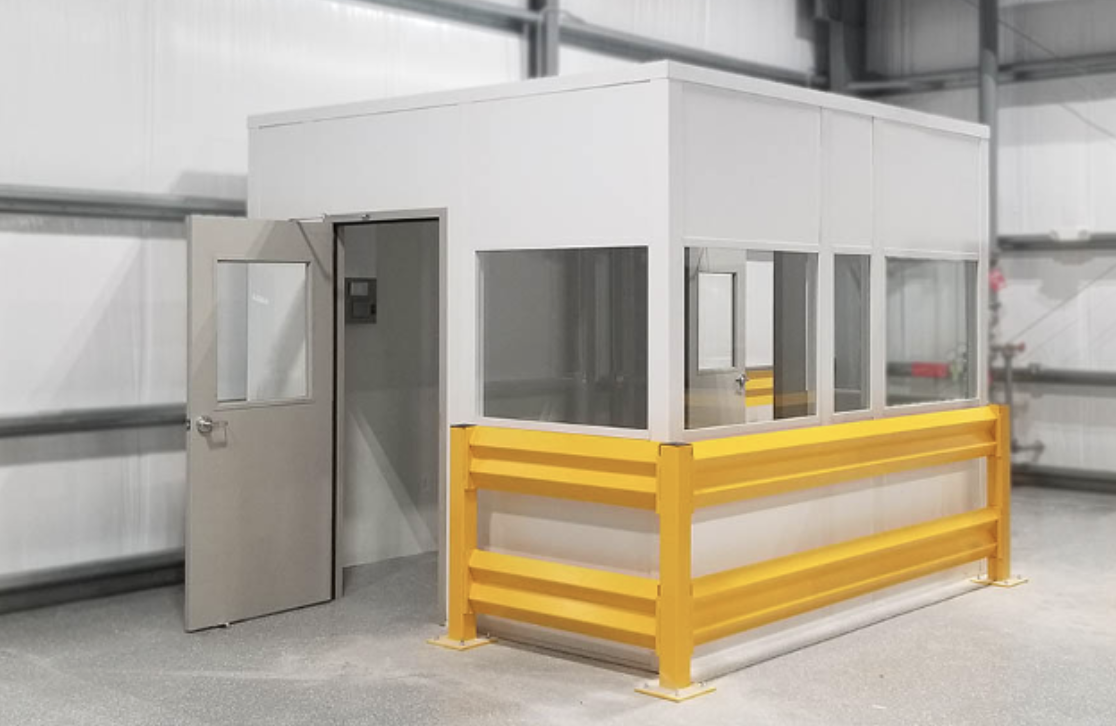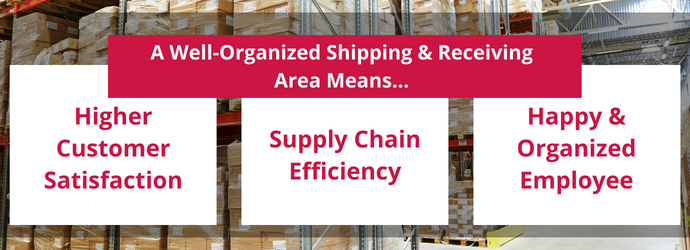How to Set Up a Shipping and Receiving Area for Maximum Efficiency

Is your warehouse management struggling with the efficiency of your shipping and receiving areas? Don't worry, you're not alone. Setting up well-organized shipping and receiving areas is crucial for distribution centers of all sizes. Whether you're a small business or a large corporation, optimizing this process can significantly enhance your overall supply chain management.
A shipping area is a designated space in a facility or warehouse layout where the product is prepared for an outbound shipment. This space is essential for your shipping department to package, label, and organize any outbound freight for maximum efficiency. A receiving area, also known as a receiving dock, is a designated space for incoming shipments to be received, inspected, and processed. An efficiently organized receiving dock is crucial for effective inventory management for your warehouse operations. The importance of an efficient shipping and receiving area cannot be overstated. It serves as the gateway through which materials, products, and equipment flow into and out of your business. On the other hand, a disorganized or poorly designed area can lead to confusion, delays, and errors.
Let’s delve into the essential steps and best practices to set up shipping and receiving areas that maximize efficiency and enhance your supply chain management. By following these guidelines, you will be able to create a streamlined process that ensures smooth operations and timely deliveries.
The Importance of a Well-Organized Shipping & Receiving Area

These areas are vital for inventory management. They allow businesses to accurately track the flow of goods, maintain optimal stock levels, and prevent inventory discrepancies. Moreover, it enables businesses to quickly identify any issues with incoming and outgoing shipments, such as damaged items or incorrect quantities. Poorly designed or disorganized shipping and receiving areas can lead to various challenges and inefficiencies. Misplaced items, delays in processing, and difficulties in locating necessary materials can result in wasted time and lost productivity. These issues not only reduce overall operational efficiency but also impact customer satisfaction as delays in receiving can lead to delays in fulfilling customer orders.Poorly designed or disorganized shipping and receiving areas can lead to various challenges and inefficiencies. Misplaced items, delays in processing, and difficulties in locating necessary materials can result in wasted time and lost productivity. These issues not only reduce overall operational efficiency but also impact customer satisfaction as delays in receiving can lead to delays in fulfilling customer orders.
By implementing well-organized shipping and receiving processes and ensuring that these areas are properly laid out, businesses can overcome said challenges. With clear processes in place, materials can be quickly and accurately received, inspected, and prepared for storage. This helps eliminate errors, reduces processing time, and provides businesses with real-time visibility into their incoming inventory.
In addition to internal benefits, optimized shipping and receiving areas can also contribute to regulatory compliance and safety procedures. Proper handling of hazardous materials, adherence to federal guidelines, and adherence to best practices in material handling all contribute to a safe working environment for warehouse employees.
Establishing an Efficient Receiving Area
To establish an efficient central receiving area, it is crucial to consider some of the following aspects and how they can be implemented into your system.
- Accommodate an ample enough docking space for smooth and obstruction-free deliveries. A big enough dock space also increases safety by reducing the risk of accidents and damage to products by allowing equipment the room to maneuver.
- Invest in equipment that will increase efficiencies, such as forklifts, hand trucks, and pallet jacks to facilitate unloading and moving the product.
- Keep your incoming and receiving docks separate. Trucks will deliver and unload at the incoming dock, which is the first point of contact for incoming shipments, then the goods can be moved to the receiving dock to be inspected, processed, and documented. The receiving dock can also function as a quality control area.
- Implement a barcode system to label the different areas of your receiving department helps with tracking, improving inventory accuracy, and overall systematizing.
Setting Up an Effective Shipping Area
Establishing an optimized shipping area is just as important when improving outbound logistics for your supply chain operations.
- During the order fulfillment process, you can streamline the operations and reduce movement through the warehouse by keeping your shipping area close to where your product storage space is.
- Setting up a separate packing station within the shipping area can help reduce bottlenecks in the shipping process by allowing packers to focus solely on packing and labeling items with their respective packing slip. Implementing a dedicated packing station allows for scalability as the business grows and can support larger order volumes without disrupting other areas. Designating a packing area also allows you to apply quality control measures because each package can be checked thoroughly before leaving the outbound docks.
- Ensuring you maintain a full stock of product inventory and packing material is essential when optimizing the order fulfillment process. This reduces the risks to employees causing delays by having to search for the material they need, such as tape, envelopes, bags, and protective gear.
Implementing Shipping and Receiving Areas
By implementing the guidelines provided in this blog post, businesses can experience a range of benefits. These include improved inventory control, streamlined workflows, enhanced customer service, and optimized supply chain management. Efficient shipping and receiving areas allow businesses to operate more smoothly, meet customer purchase orders efficiently, and stay ahead in a competitive market.
Additionally, well-organized shipping and receiving areas streamline processes, making it easier for employees to locate and handle incoming and outgoing items efficiently. Studies show from the National Institute of Health that this increase in efficiency reduces stress and frustration, ultimately contributing to higher employee satisfaction and morale.
The setup of a well-organized shipping and receiving area is vital for businesses across industries. By following the guidelines outlined in this blog post and reaching out to experts like Panel Built, businesses can create a streamlined and efficient logistics process. Start implementing these best practices today and pave the way for smoother and more successful supply chain management.
Panel Built Expertise in Shipping and Receiving Areas
At Panel Built, we understand the importance of optimizing supply chain operations by designating shipping and receiving areas and implementing best practices to increase efficiency. Panel Built offers a line of panelized, modular shipping offices that serve as the central hub for all shipping-related activities, dedicating a space for order processing, coordination, and communication. Setting up an on-site office in your shipping facility allows for better oversight and quality control of outbound shipments and is ideal for organizing and maintaining documentation.
With years of experience in the industry, you can rely on Panel Built to provide custom modular office buildings, industrial mezzanines, prefabricated buildings, guard houses, and metal stair systems. Our complete line of solutions including pre-assembled exterior buildings and cleanrooms are here to meet the various needs of your business.
Although our modular shipping offices are prefabricated in one of our specialized modular construction facilities, each building is designed specifically to fit your project's needs. Custom layouts, sizes, colors, wall facings, and more are available to best suit your environment.
Panel Built's commitment to customer satisfaction and quality is unparalleled. They prioritize meeting our client's unique requirements and offer tailored solutions to address specific challenges related to shipping and receiving areas. By leveraging their knowledge and experience, Panel Built can design and construct a state-of-the-art shipping and receiving area that aligns with industry best practices and maximize supply chain efficiency.
If you're looking for expert guidance and assistance in setting up your shipping and receiving area, Panel Built can provide the necessary expertise and solutions. Visit our website to request a quote or contact one of our representatives to explore our offerings and receive additional information about how we can help you establish effective shipping and receiving areas tailored to your needs. Our team of professionals is dedicated to helping businesses optimize their logistics operations and improve overall efficiency.
